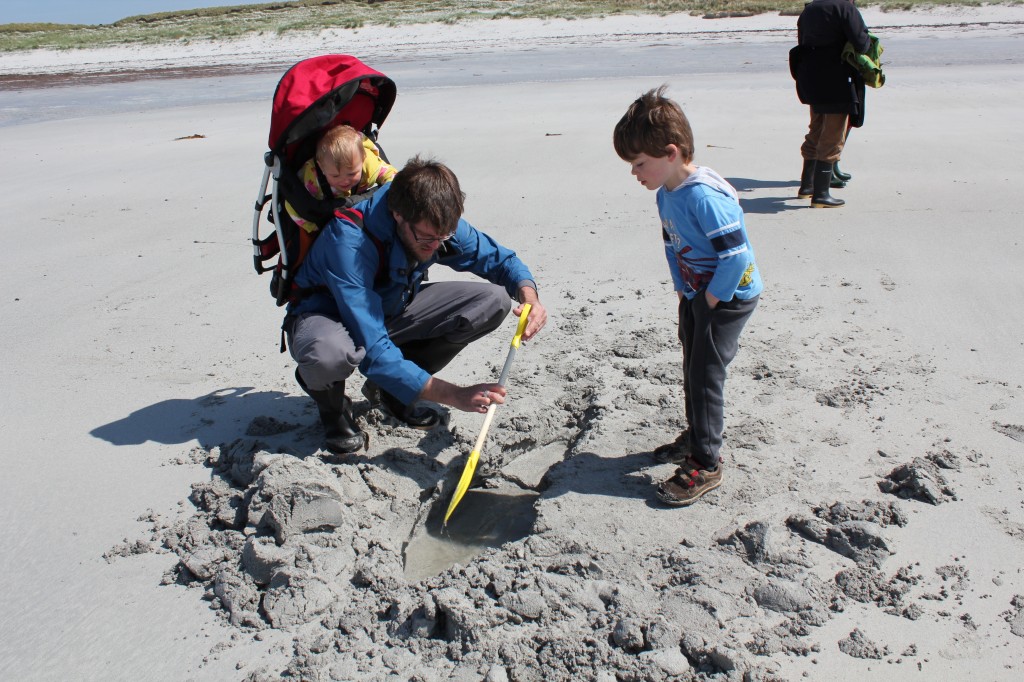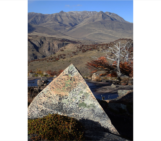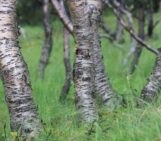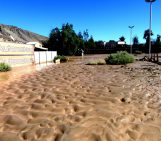Today in GeoTalk, we’re talking to Simon Mudd, an exceptional and forward-thinking geomorphologist.
First, could you introduce yourself and let us know a bit about what you are currently working on?
I am lecturer in Landscape Dynamics at the University of Edinburgh, where I have been since 2007. Before that I was a post-doc at Vanderbilt University, in Nashville Tennessee. I received my PhD from Vanderbilt in Environmental Engineering in 2006. My work is split between salt marshes, where I construct numerical models to examine the critical rates of sea level rise beyond which marshes are likely to die, and mountainous landscapes where I examine the interaction between erosion rates and the geochemical evolution of soils. Both of these research avenues have implications for the global CO2 budget: marshes are extremely efficient at burying organic carbon, and the chemical weathering of silicate minerals consumes atmospheric CO2.
During the EGU General Assembly, you received an Arne Richter Award for Outstanding Young Scientists for your research into how climate change and tectonic forcing influence hill-slope morphology and soil thickness. Could you summarise how these processes interact?
Broadly speaking, faster tectonic uplift leads to faster erosion rates, which result in steeper hillslopes, sharper hilltops and thinner soils. This means that tectonic uplift should leave an imprint on upland topography and upland soils. One of my aims is to try and understand how topography and soil thickness responds to tectonic forcing well enough to be able to quantify tectonic history
How do chemical weathering and physical transport processes influence landscape dynamics?
Chemical weathering often results in a mass loss from weathered materials. If mixing processes maintain constant regolith (loose rocky material) or soil density, and there are lines of evidence to suggest this to be the case in many landscapes, this mass loss will lower the surface of the Earth. There are places on Earth where chemical weathering accounts for over 50% of total denudation and in these places chemical processes can be just as important as physical processes in determining the geometry of the land surface.
I think this is underappreciated by geomorphologists: most landscape evolution models do not include a chemical component. In addition, chemical weathering sets both the particle size and mineralogy of soils. Particle size is theorized to control how rapidly soil particles will move downslope given a fixed input of disturbances (from burrowing animals, for example). Particle size and mineralogy are primary factors in determining soil hydraulic conductivity, which controls the biogeochemical functioning of soils. They also control cohesion, which determines the stability of a slope.
What role does vegetation have to play in the evolution of geomorphic systems?
Many sediment transport phenomena are biologically mediated. On salt marshes, marsh plants trap sediment and help maintain the marsh elevations relative to mean tide in the face of rising sea levels. On hillslopes, plant roots add cohesion to the soil and reduce landslide risk. They also protect the soil from erosion by rainsplash and overland flow. Root growth and tree toppling can also move sediment down slope. In many landscapes there is evidence to suggest that the dominant sediment transport mechanisms are biological, and if we are going to accurately predict erosion rates in the face of changing climate we are going to have to link sediment transport with changing plant biomass.
Finally, what are your plans for the future?
It is an incredibly exciting time to be a geomorphologist because there are not one, but two major advances that are revolutionising our field. The first is cosmogenic nuclides, which provide information on erosion rates averaged over hundreds to thousands of years – long enough to average over the probability distribution of storms. We now can quantify how fast landscapes are eroding with relative ease.
The second advance is high resolution topographic data that is now being widely collected and often is freely available. Light Detection and Ranging technology (LiDAR) returns clouds of data on centimetre scale resolution, allowing us not only to retrieve extremely high resolution maps of the Earth’s surface, but also information about plant canopies. The convergence of these techniques allows us to collect information about both fine resolution surface processes and plant populations simultaneously. With this data we will be able to examine how erosion rates modulate soil chemistry and thickness, how this influences plant productivity, and how these plants modulate sediment transport. These are the topics I’m most excited about working on in the future.
If you’d like to suggest a scientist for an interview, please contact Sara Mynott.





